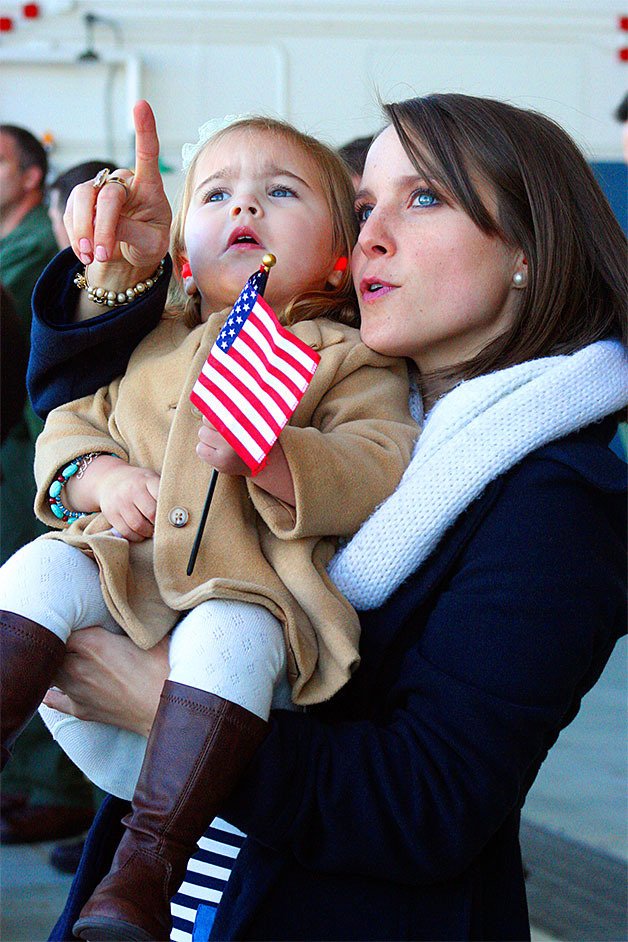Ben Kroll and his daughter, Abigail, 2, waited expectantly for “Uncle Josh” to land his EA-6B Prowler at Ault Field and climb out of the cockpit.
“Uncle Josh is coming,” Abigail said. “It’s going to be loud.”
Around 11:30 a.m. Friday, Kroll was able to greet friend and pilot Josh Brown, who arrived with the other Prowlers with Electronic Attack Squadron 134.
The Garudas’ nine-month deployment aboard the USS George H.W. Bush marks the squadron’s — and Navy’s — final deployment of the Prowler.
“It’s great,” said Kroll, who is a pilot with VAQ-140.
“They have been gone for some time.”
Cheryl Jason, wife of the squadron’s commanding officer, Christopher Jason, said she was incredibly proud of her husband. He assumed command of the squadron mid-deployment in June.
While each deployment comes with its own challenges, Jason said it’s best just to keep busy and take it one day at a time.
“It’s always one of the happiest moments for the families when they come home,” said Capt. Mike Norter, Whidbey Island Naval Air Station’s commanding officer.
“We going to do some traveling,” said Silvia Conner, who greeted her husband Friday. “He’s going to want to stretch his legs after being locked in that steel box for nine months.”
VAQ-134 is the final Navy squadron to transition to the new EA-18G Growler, which will be completed early next year. This will mark the end of an era for the Prowler dating to the early 1970s.

Prowlers will still be flown by the Marines.
VAQ-134’s deployment began in February in support of Operation Enduring Freedom. During the first few months, the Garudas flew 104 combat missions over Afghanistan, according to the Navy.
Four months into deployment, the USS George H.W. Bush was ordered to support Operation Inherent Resolve in Iraq and Syria. While performing operations against the Islamic State in Iraq and Syria, or ISIS, the Garudas flew 109 combat missions.


